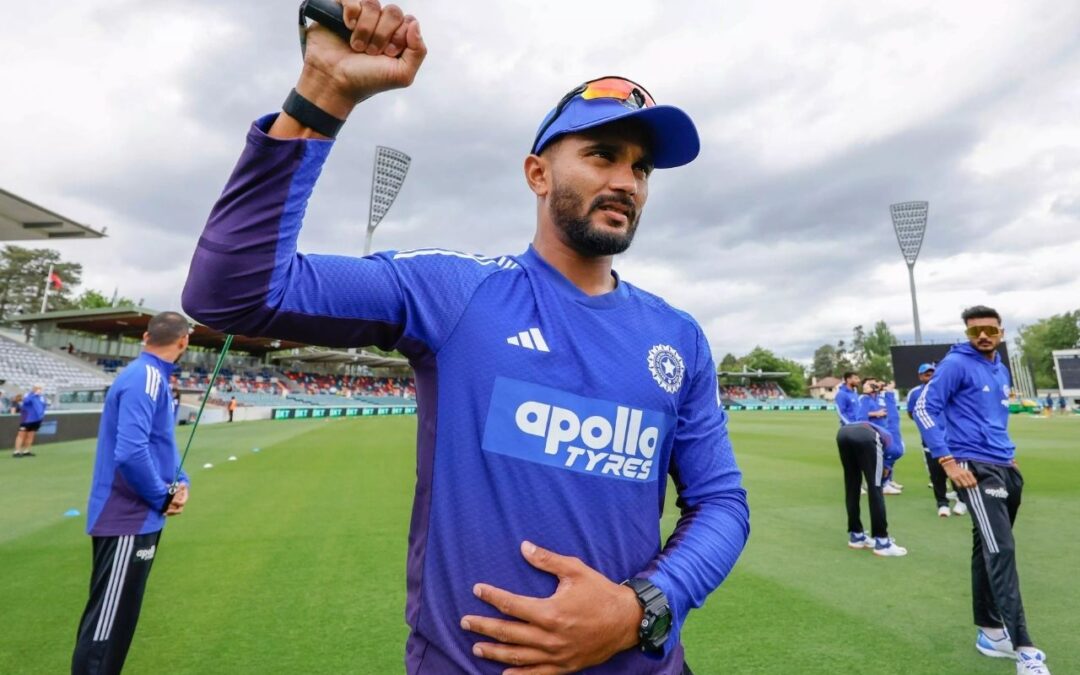The Board of Control for Cricket in India (BCCI) made it official that the first three T20 Internationals player from the current series against the Australian cricket team would not be Nitish Kumar Reddy.
The injuries in play
- During the second ODI of the series held in Adelaide, Reddy sustained an injury to his left quadriceps.
- Besides, he has now reported neck spasms, which are causing him to have limited movement and are also prolonging his recovery time.
- Due to these interrelated problems, he is not considered for the first three T20 internationals.
Why this matters
1. Opportunity lost for Reddy
Reddy, who is barely 22 years old, has already been introduced into India’s multi-format plans slowly but surely. This series was another opportunity for him to get the spotlight. His non-availability means he loses precious time on the pitch.
2. Team selection impact
Indian squad gets reduced to one less all-rounder (batting + seam bowling) with the absence of Reddy. Now, the management has to make changes in the lineup to compensate for his bowling and batting contributions.
3. Fitness questions surface
This is not a single injury case. The national cricket team tour of England earlier this year saw him missing multiple Tests because of a knee injury and ligament damage. The neck spasms coming in also raises a bigger question about his fitness: it indicates that his body might be under stress, either due to workload, previous injury compensations, and/or training stress.
4. Timing of the series
The T20I series with Australia carries a lot of significance, not only for the immediate results but also as a buildup towards the larger tournaments. Reddy might fail to take advantage of this opportunity to become fit and gain confidence over his form if he gets sidelined now.
Also read: England vs South Africa Semifinal Highlights: SAW beat ENGW by 125 runs to reach World Cup finals
What’s the future for Reddy?
- The medical squad of BCCI will keep an eye on his development each day.
- It is highly probable that he will stay out of the first three T20Is, which gives him a small window before he might make a come-back (according to his healing).
- Health-management would be paramount: the past of injuries (knee, quad, now neck) suggests he might be treated carefully so as to avoid the risk of causing a long-term problem.
- Likely, he will engage in rehabilitation and strength/conditioning, maybe off-field, before trying to get back to playing.
Impact on the team and the series
- The Indian team might change their playing eleven slightly: without Reddy’s all-round potential, they might choose an extra bowler or batter to keep the equilibrium.
- Australia, knowing that a main Indian all-rounder is missing, might change their war plans by going for the weak batting depth (which could be in their favor) and avoiding the threats.
- For the audience and the critics, Reddy’s unavailability throws a “what if” element into the series: could India have fielded an even more powerful line-up if he had been fit?
A look at his recent injury history
- Reddy faced a left knee ligament injury, which was confirmed by scans and ruled him out of the rest of the series during India’s tour of England in July 2025.
- Recently, during the same tour to Australia, he sustained a left quadriceps injury in the second ODI.
- Now, neck spasms have also joined the list of problems. The buildup of problems indicates a point where careful management of his workload, recovery, and fitness protocol will be necessary.
Final thoughts
For Nitish Kumar Reddy, this is a setback, however, it is not necessarily a career-defining one. He is talented, young, and obviously under the selectors’ radar. What he requires at this point is an intelligent rehabilitation process, patience, and a gradual return to full fitness as opposed to rushing back.
Reddy’s absence will not be long and the Indian team will be hoping for him to come back and fit for the next games. The greater picture is: training him and making him available will probably be more costly than putting him back early.
Written By:- Manjunath S

